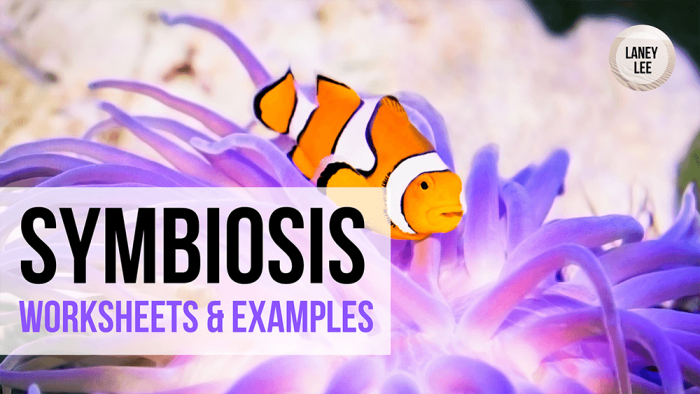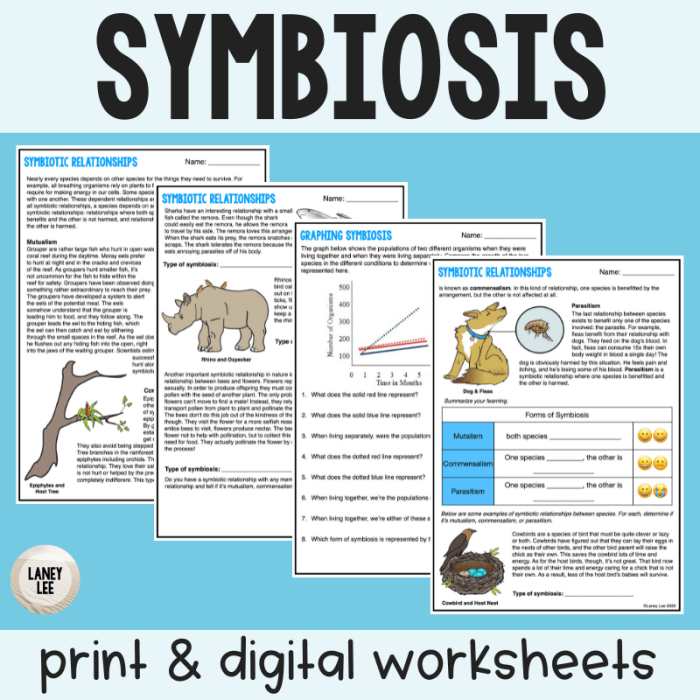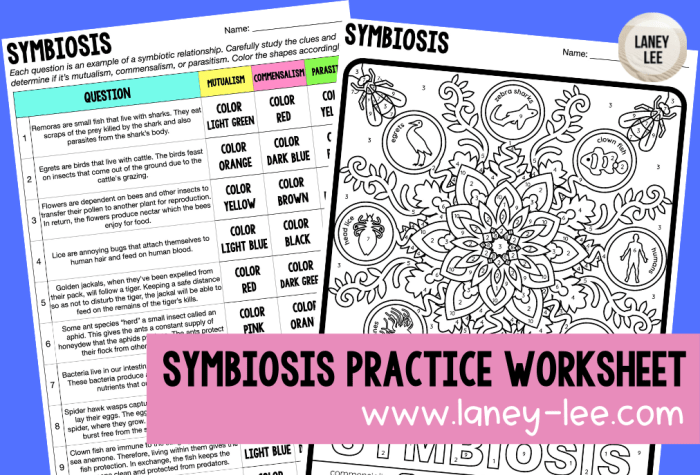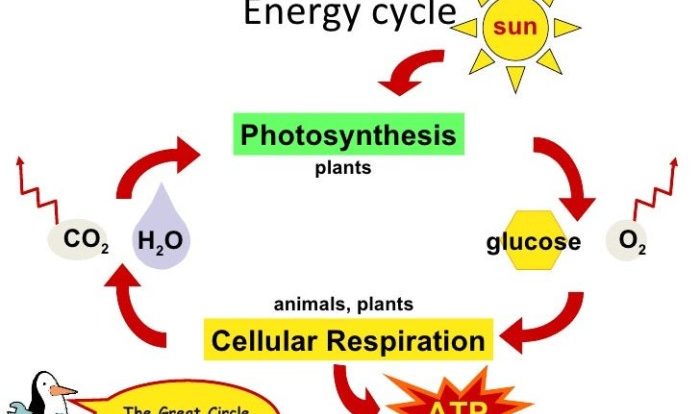Delve into the fascinating world of symbiosis with our comprehensive Symbiosis Practice Worksheet Answer Key. This invaluable resource empowers you to grasp the intricate dynamics of symbiotic relationships, equipping you with a profound understanding of their significance in shaping ecosystems and the natural world.
Our meticulously crafted answer key provides clear and concise solutions to a range of practice exercises, enabling you to reinforce your knowledge and deepen your comprehension of symbiosis concepts. By exploring real-world examples and examining the impact of human activities on symbiotic relationships, this worksheet unlocks a world of discovery and critical thinking.
Symbiosis Practice Worksheet Answer Key: Overview
A symbiosis practice worksheet is an educational tool designed to reinforce understanding of symbiosis concepts. It typically consists of questions or exercises that require students to identify, classify, and analyze different types of symbiotic relationships. The answer key provides correct responses to the exercises, enabling students to self-assess their understanding and identify areas for improvement.
Understanding symbiosis is crucial for comprehending the intricate dynamics of ecosystems. Symbiotic relationships are widespread in nature and play significant roles in the survival, adaptation, and evolution of organisms.
Symbiosis Types and Definitions
There are three main types of symbiosis, each characterized by distinct interactions between the participating organisms:
| Type | Definition | Example |
|---|---|---|
| Mutualism | Both organisms benefit from the relationship. | Ants and acacia trees |
| Commensalism | One organism benefits, while the other is neither harmed nor benefited. | Barnacles on whales |
| Parasitism | One organism (parasite) benefits at the expense of the other (host). | Tapeworms in humans |
Worksheet Exercises and Solutions: Symbiosis Practice Worksheet Answer Key

| Exercise | Answer |
|---|---|
| Identify the type of symbiosis in the relationship between clownfish and anemones. | Mutualism |
| Explain how commensalism differs from parasitism. | In commensalism, one organism benefits without harming the other, while in parasitism, one organism benefits at the expense of the other. |
| Give an example of a symbiotic relationship in a forest ecosystem. | Mycorrhizal fungi and tree roots |
Symbiosis in Real-World Examples
Symbiosis is ubiquitous in various ecosystems, including:
- Coral reefs:Symbiotic relationships between corals and algae provide essential nutrients and support the reef’s structure.
- Pollination:Many plants rely on symbiotic relationships with insects or birds for pollination, ensuring their reproduction.
- Nutrient cycling:Bacteria and fungi form symbiotic relationships with plants to facilitate nutrient absorption and decomposition.
These symbiotic relationships not only enhance the survival and adaptation of individual organisms but also contribute to the overall stability and functioning of ecosystems.
Symbiosis and Human Impact

Human activities can significantly impact symbiotic relationships:
- Pollution:Chemicals and pollutants can disrupt symbiotic interactions, affecting the health and survival of organisms.
- Habitat destruction:Deforestation and urbanization can destroy habitats, disrupting symbiotic relationships and reducing biodiversity.
- Climate change:Rising temperatures and altered precipitation patterns can affect the distribution and abundance of organisms, potentially disrupting symbiotic relationships.
Understanding the potential consequences of human activities on symbiosis is crucial for preserving the delicate balance of ecosystems.
Symbiosis Research and Advancements

Ongoing research in symbiosis has led to significant advancements:
- Medical applications:Symbiotic bacteria in the human gut are being studied for their potential in treating diseases.
- Biotechnology:Symbiotic relationships are being harnessed to develop novel technologies, such as bioremediation and biofuel production.
- Conservation:Research on symbiosis informs conservation strategies aimed at protecting and restoring symbiotic relationships in ecosystems.
Continued research and innovation in symbiosis hold immense promise for addressing global challenges and fostering sustainable interactions between humans and the environment.
General Inquiries
What is the purpose of a symbiosis practice worksheet?
A symbiosis practice worksheet is designed to provide students with hands-on exercises and questions to reinforce their understanding of symbiotic relationships. It allows them to apply their knowledge to specific scenarios and deepen their comprehension of the topic.
Why is it important to understand symbiosis concepts?
Understanding symbiosis concepts is crucial because symbiotic relationships play a vital role in shaping ecosystems and maintaining biodiversity. They influence the survival, growth, and behavior of organisms, and have implications for conservation and sustainability efforts.
